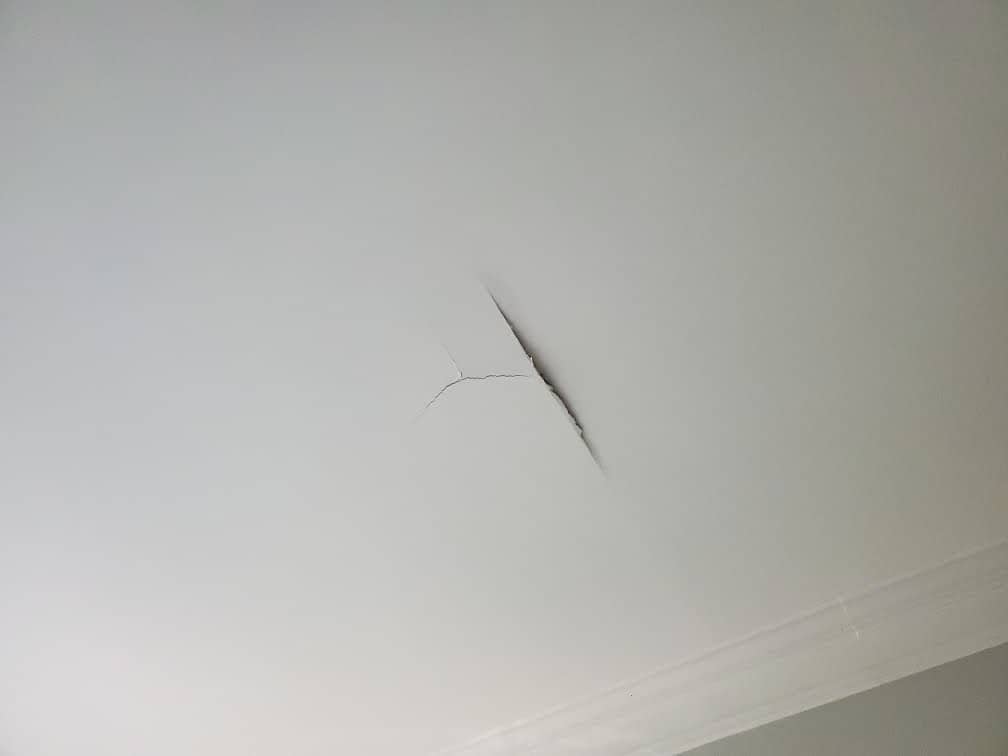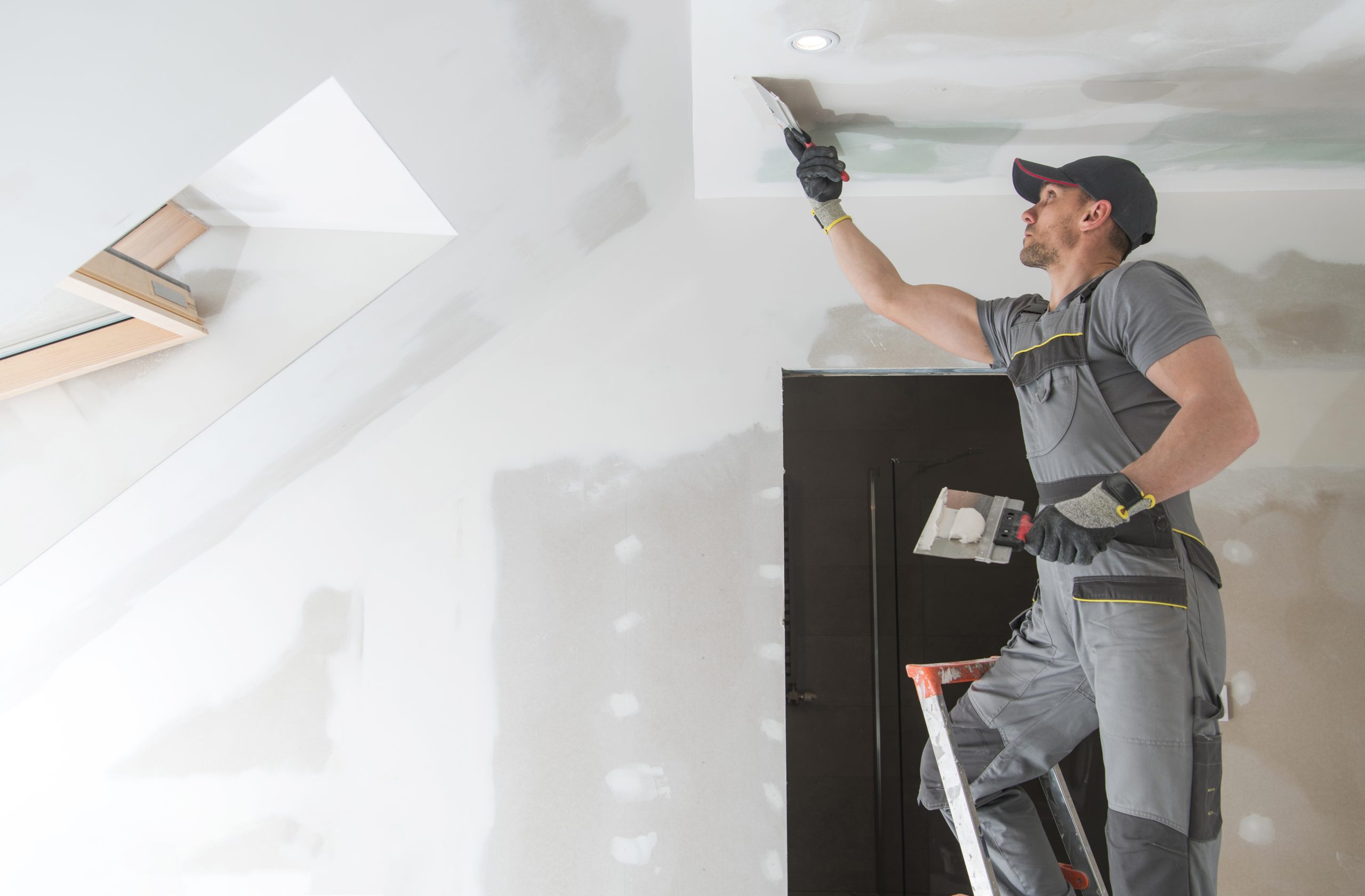Discover the Ideal Practices for Effective Drywall Repair Work and Setup
The art of drywall repair service and installation calls for a blend of skill and accuracy. Mastering the necessary tools is crucial for accomplishing a seamless surface. Comprehending the step-by-step process can make a considerable distinction in the final outcome. Appropriate strategies for mudding and taping are likewise crucial. What remains is the expertise of upkeep that assures durability. These aspects with each other create a refined end result worth checking out better.

Vital Devices for Drywall Repair and Installation
When taking on drywall repair and setup, having the right devices can greatly enhance the effectiveness and top quality of the work. An energy blade is important for cutting drywall sheets exactly, while a drywall saw can aid in making a lot more intricate cuts. Taping knives, available in various dimensions, are crucial for applying joint substance efficiently and evenly. A drywall sander, ideally with a dust collection function, helps attain a polished surface, lowering the need for substantial cleaning.
Additionally, a determining tape warranties accurate measurements, and a level makes certain that installments are straight and plumb. Safety gear, including dirt masks and safety glasses, must not be neglected to shield versus debris and dust. Finally, a stud finder aids in locating framing members, assuring protected installment. By furnishing oneself with these important tools, the fixing and installation procedure comes to be a lot more workable and causes a professional-quality end result.

Step-by-Step Guide to Patching Holes
Covering holes in drywall needs an organized approach to guarantee a smooth repair work. The area around the opening have to be cleaned and any loosened debris removed. For little openings, a putty knife can be used to use a lightweight spackle, pressing it right into the hole and smoothing the surface area. After it dries out, sanding is necessary to produce a level surface. For bigger holes, a spot of drywall might be needed. This entails reducing an item of drywall slightly larger than the hole, safeguarding it to the wall surface with screws, and making use of joint substance to cover the joints. As soon as the compound dries out, it must be fined sand smooth. Finally, priming the patched location prior to painting will guarantee an also surface. Complying with these steps will cause a professional-looking repair work that mixes effortlessly with the surrounding wall.
Methods for Seamless Drywall Installment
Achieving smooth drywall installation demands cautious planning and execution. Initially, it is necessary to gauge and reduce drywall sheets precisely to decrease gaps. Making use of an utility knife, installers should score the board prior to snapping it along the cut line, making sure tidy edges. Appropriately straightening the sheets is essential; beginning from the leading and working down assists maintain uniformity.
Attaching drywall to the studs calls for consistent spacing, normally every 16 inches, making use of screws as opposed to nails for better hold. This technique reduces the risk of stands out over time. Additionally, startling the seams in between sheets improves architectural stability and decreases the presence of joints.
Ultimately, utilizing the best thickness of drywall for details locations-- such as moisture-resistant kinds in washrooms-- more contributes to a perfect finish. Adhering to these methods will cause a professional-looking and smooth installation, setting the phase for the subsequent completing procedures.
Finishing Touches: Insulation and Mudding
Ending up touches, such as taping and mudding, play an essential function in attaining a polished drywall surface. Taping involves applying a slim strip of drywall tape over the joints and joints, making certain a smooth appearance. This procedure aids avoid splits and develops a solid bond in between drywall sheets. It is essential to pick the right sort of tape, with paper and fiberglass harmonize being the most common options.
Mudding, or applying joint compound, follows insulation. This compound completes spaces and ravel the surface for an uniform finish. It is normally used in several layers, with each coat requiring to dry prior to fining sand. Correct technique includes feathering the edges to mix the compound into the surrounding drywall, minimizing exposure.
When finished appropriately, taping and mudding enhance both the architectural and visual integrity of the drywall installation, leading to a professional-quality finish.
Tips for Keeping Your Drywall After Installment

Additionally, maintaining a constant indoor moisture degree can protect against bending or mold and mildew growth. Utilizing a dehumidifier in damp areas, like basements, is advisable. It's likewise helpful to periodically repaint areas that show wear, as this protects the underlying material. When moving furniture or setting up components, care must be worked out to stay clear of damaging the drywall. By adhering to these upkeep tips, home owners can expand the life of their drywall, protecting it stays an eye-catching feature of their interiors.
Frequently Asked Concerns
What Safety And Security Gear Is Needed for Drywall Repair Work and Installment?
For drywall repair and setup, important safety and security gear consists of safety goggles to secure eyes, dust masks to prevent inhalation of bits, gloves for hand protection, and knee pads for convenience during prolonged kneeling. drywall contractors.
Exactly how Do I Figure Out the Drywall Thickness Needed for My Job?
To identify the drywall density needed for a project, one should think about the wall surface's architectural requirements, regional building ordinance, and the intended use the space, commonly going with 1/2-inch or 5/8-inch drywall.
Can I Repair Drywall Without Removing Furnishings From the Room?
Yes, drywall can be repaired without eliminating furniture from the area. Careful planning and safety measures can minimize mess, allowing for efficient repair services while keeping surrounding items safe from dirt and damages throughout the procedure.
What Kinds of Drywall Are Best for Different Settings?
Moisture-resistant drywall is ideal for restrooms and kitchen areas, while soundproof drywall fits shared walls in apartment or condos. Fire-rated drywall is best for garages, and common drywall functions well generally living areas, ensuring resilience and suitability for numerous environments.
The length of time Does It Take for Drywall Mud to Dry Entirely?
Drywall mud normally takes 24 to two days to dry entirely, depending on variables like moisture and temperature (drywall contractors). Thicker applications may need longer drying out times, while thinner layers can dry out more rapidly. Correct ventilation help drying
The art of drywall repair and installment requires a blend of skill and precision. When undertaking drywall repair work and setup, having the right devices can considerably boost the performance and top quality of the work. An view website utility knife is important for cutting drywall sheets specifically, while a drywall saw can help in making a lot more detailed cuts. Achieving seamless drywall setup needs cautious preparation and implementation. Moisture-resistant drywall is perfect for washrooms and cooking areas, while soundproof drywall matches shared wall surfaces in apartments.